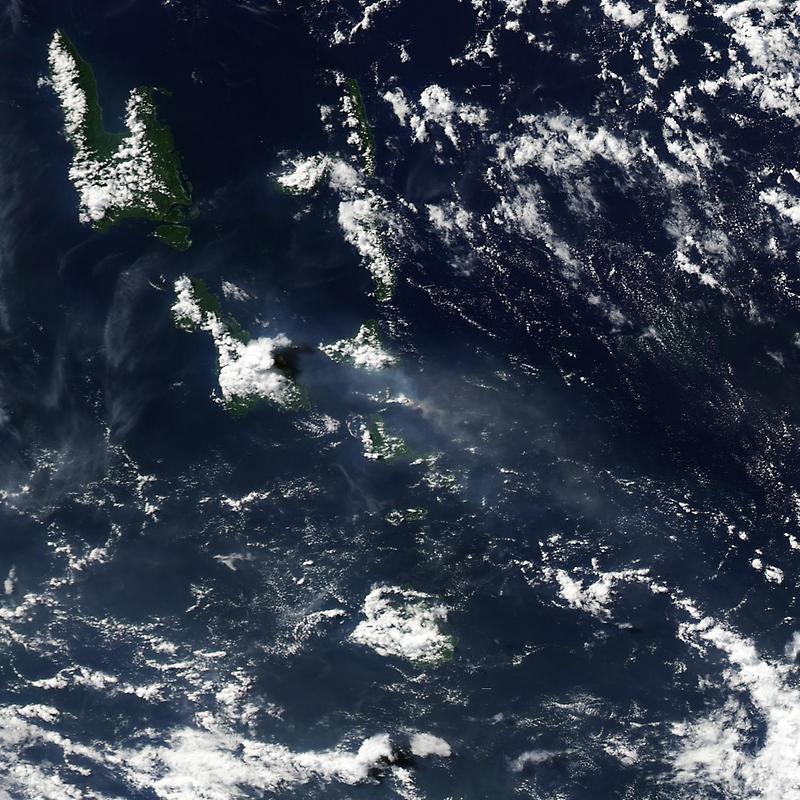Vanuatus Lopevi Volcano #

Image courtesy of NASA., under PD
Besides Lopevi Lopévi, Malampa, Vanuatu and its neighboring islands, this image shows the volcanic plume blowing westward away from the volcano. The plume appears as a small, mostly opaque puff of gray-beige. The resulting area of vog, which appears as a more transparent, dingy-gray haze, dwarfs the diminutive plume.
Lopevi is a stratovolcano composed of alternating layers of solidified lava, hardened ash, and volcanic rocks. One of the island nations most active volcanoes, this volcanic island is only about 7 km (4 mi) wide. Eruptions have been recorded at Lopevi since the middle of the 19th century. Vanuatus two major islands of Espiritu Santo and Malakula appear in the upper left.